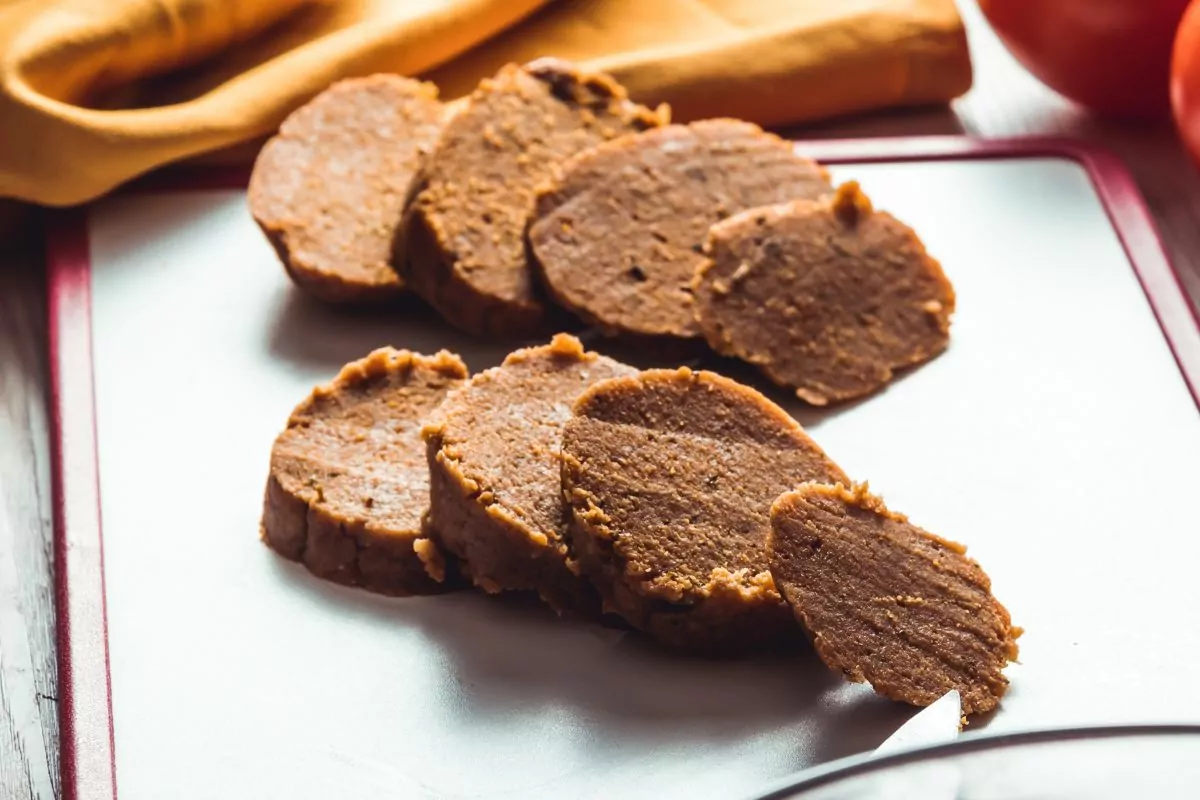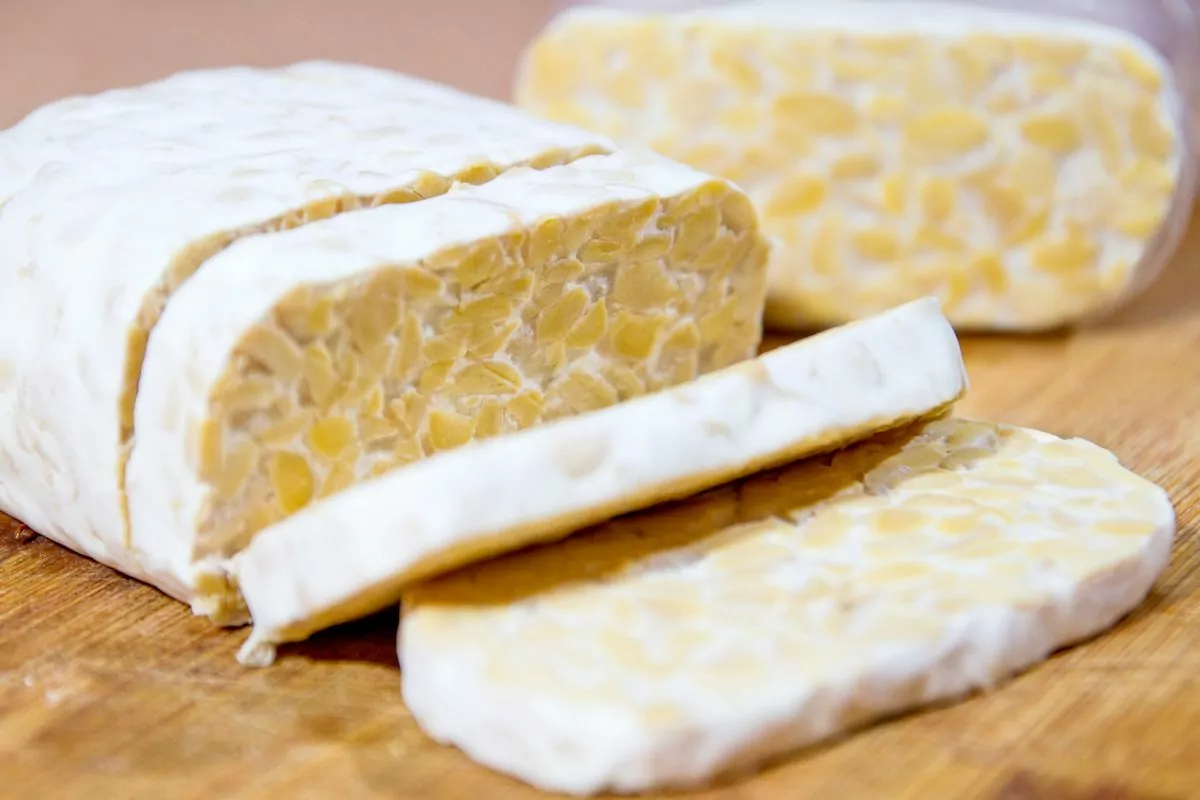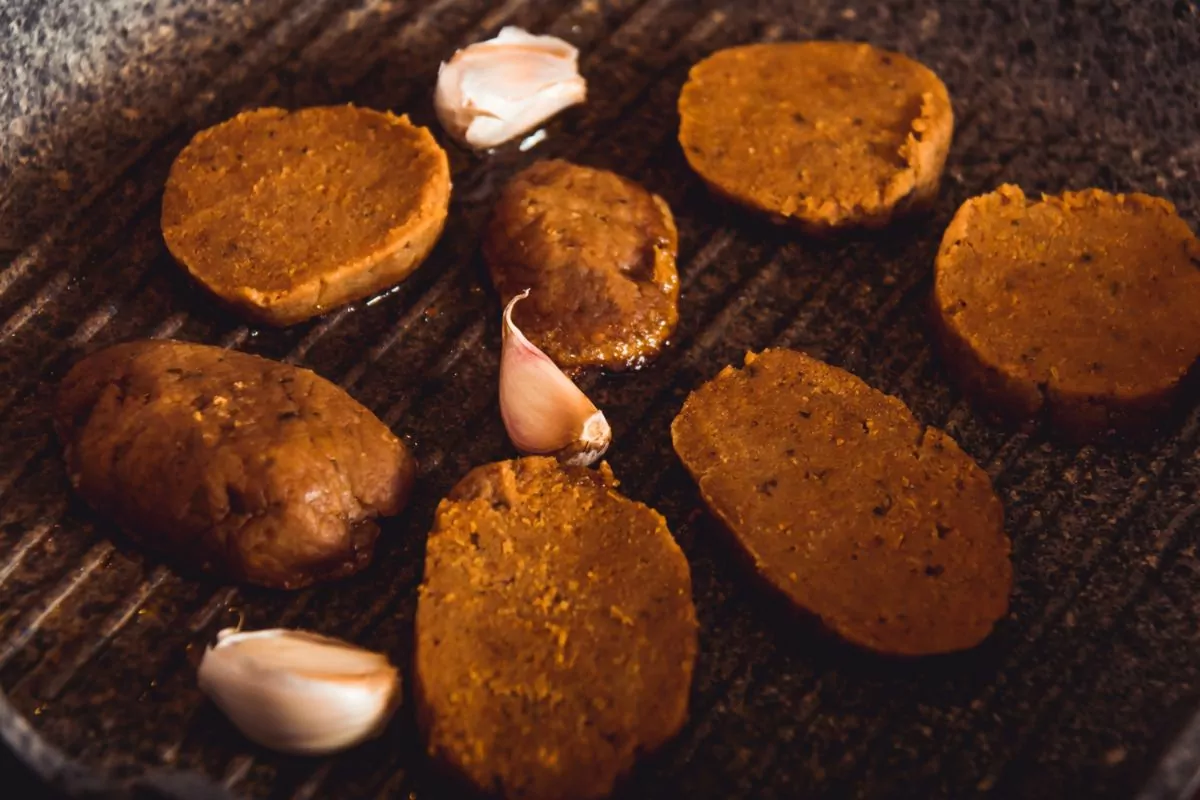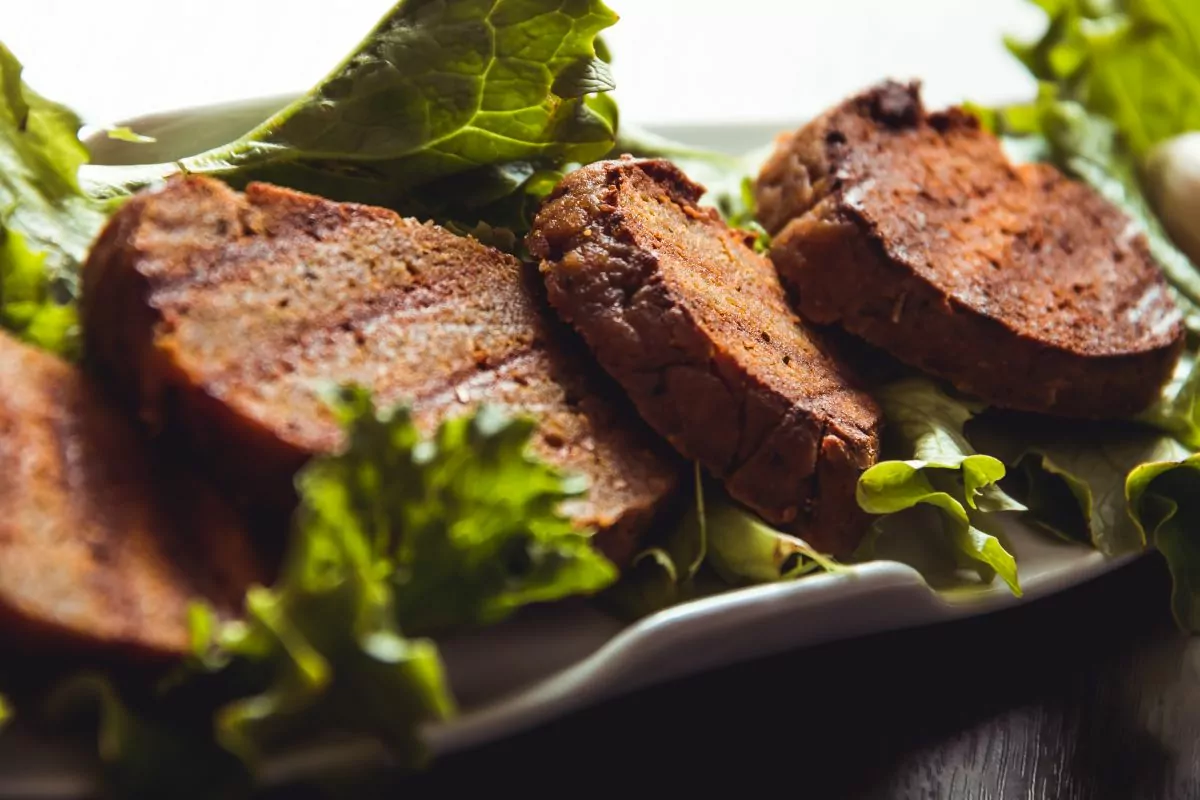You may have heard people talking about seitan and wondered what they were referring to. Apart from its slightly disconcerting name, seitan is a great product for both vegans and vegetarians.

So what is seitan? We’ll take a look at where it comes from, what it’s used for, how it is cooked and what it tastes like. We’ll also consider how it compares to tempeh and tofu.
What Is Seitan?
Seitan has been around for a while. It was originally made in China by Buddhist monks who follow a vegetarian diet. But it was not necessarily known by that name.
It has alternatively been called wheat meat, gluten or wheat protein. All of which point to its origin and makeup.
Seitan is made by isolating the starch from wheat dough by rinsing it, the result is a high protein gluten that is used as a meat substitute.
As such seitan has been used as a base for a lot of vegan and vegetarian dishes over the years. Examples are fakin’ bacon, meatless frankfurters and Tofurky.
Due to its soft and pliable texture seitan can be pressed and molded into almost any shape to resemble different foods such as strips of bacon or hot dogs.
When cooked seitan looks similar to meat, this combined with its chewy texture make it an ideal choice for vegans as a meat substitute.
What Does It Taste Like?
Seitan has a mild but earthy taste which is comparable to the flavor of portobello mushrooms or bland chicken.
As it is so neutral in taste it can take on a variety of flavors and so can be used in a variety of dishes as the perfect meat substitute.
So you can add it to a curry for some spice or allow it to soak up the flavors of your favorite soup or stew while adding some vegetable protein.
While in essence it may seem similar to tofu the difference is in the texture. Seitan has a meaty, chewy texture which is why it makes a good substitute for it.
This is part of the reason for its popularity as it is quite bland, its appeal lies in its texture not in how it tastes.
That being said, it’s perfectly fine to grill or fry seitan and just sprinkle it with some flavoring such as barbecue sauce.
How To Cook Seitan
Seitan always needs to be cooked when using it in a vegan meal. How you cook it will depend on your recipe.
For a vegetable stir fry, cook the chunks of seitan first to get it nicely browned before adding your vegetables. With a splash of soy sauce or tamari to add some flavor you will have a delicious dish.
In a curry you can simply put the seitan into the pot to absorb the flavors of the dish and add some additional protein in the process. If you prefer you can brown the seitan first.
There are so many ways you can cook seitan. In fact for any recipe that would normally include meat you can simply swap it for this vegan alternative. So use it in chili, tacos, or even for hot wings.
It can be fried, grilled, barbecued or added to soups and stews.

Where Do You Get Seitan From?
If you like the sound of this versatile vegan ingredient you may be wondering where you can get some.
In the grocery store you can find seitan in the refrigerated section next to the tempeh and tofu.
Typically it’s sealed in plastic or sold in boxes. Check the labels for the least processed version you can find.
Alternatively, you can make seitan at home. It is a very simple process, and it is a cheaper way to get seitan for your recipes.
Once you have made some you can store it in the refrigerator for a few days, but no more than seven days, or freeze it for use later.
If you intend to freeze your homemade seitan, cut it into strips or chunks first and then freeze it. It will keep for up to six months in the freezer.
Seitan Vs Tempeh Vs Tofu
While it may seem like seitan and tempeh have a lot in common, there are some differences.
One similarity is that they both have a fairly mild earthy taste and therefore absorb outside flavors well.
They also both have a chewy texture, so make good meat substitutes.
However, tempeh is made from cooked and slightly fermented soybeans while seitan comes from wheat.
This means that seitan cannot be eaten by those following a gluten free diet whereas tempeh can.
Tempeh is made through fermentation which makes it easier to digest even for those who don’t need to follow a gluten free diet
Tofu is made from soy milk in a process that is similar to cheese making. It is high in protein and contains all the essential amino acids.
Unlike tempeh and seitan tofu has no flavor of its own, not even a mild one. It is also a softer texture than both seitan and tempeh.
Is Seitan Good For You?
Whether seitan is good for you will depend on how it is made. A traditionally made version is full of protein and nutrients.
However, many commercially made varieties are highly processed and may retain little of their original nutritional value.
The best way to make sure you are getting the best seitan is to make your own at home. Then you will know exactly what has gone into it.
Seitan is naturally low in fat, carbohydrates and sugars but high in protein. One serving of seitan has 15 to 21 grams of protein, as much as real meat.
Final Thoughts
As a meat substitute for vegans seitan is extremely versatile. It can be used in a wide variety of dishes and is also full of protein.
Whether you decide to buy some or make your own at home, try it out and see for yourself.
- Cucumber, Apple And Pineapple Juice - September 12, 2022
- French Toast Without Eggs - September 12, 2022
- Cook Canned Chickpeas - September 12, 2022








